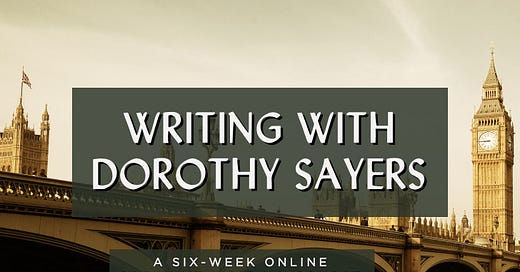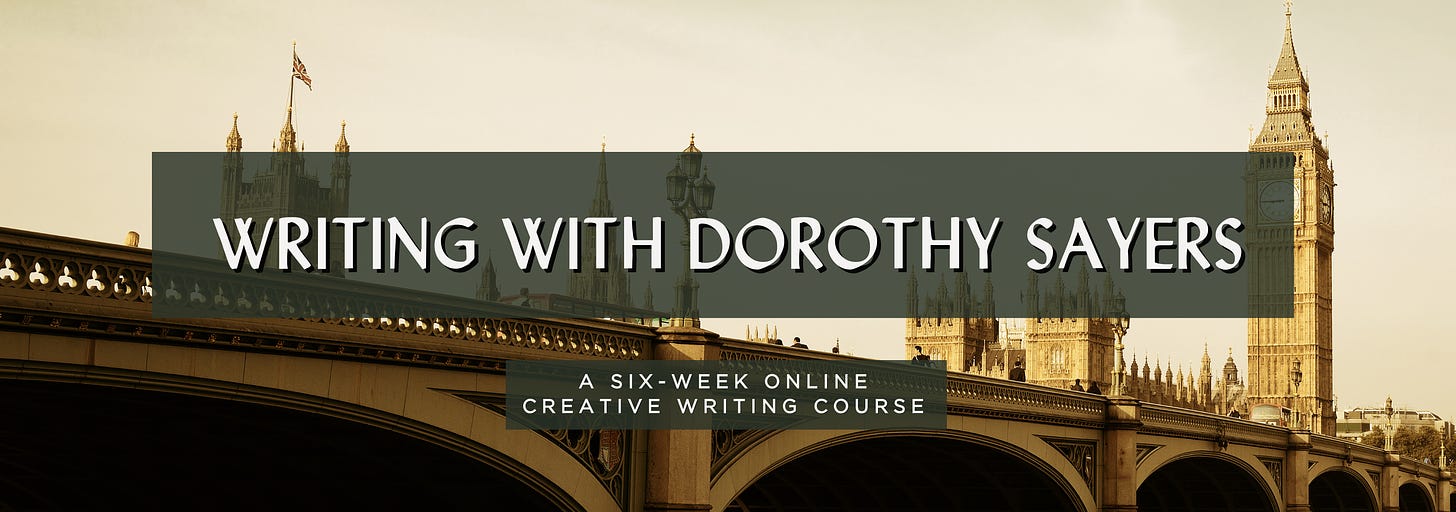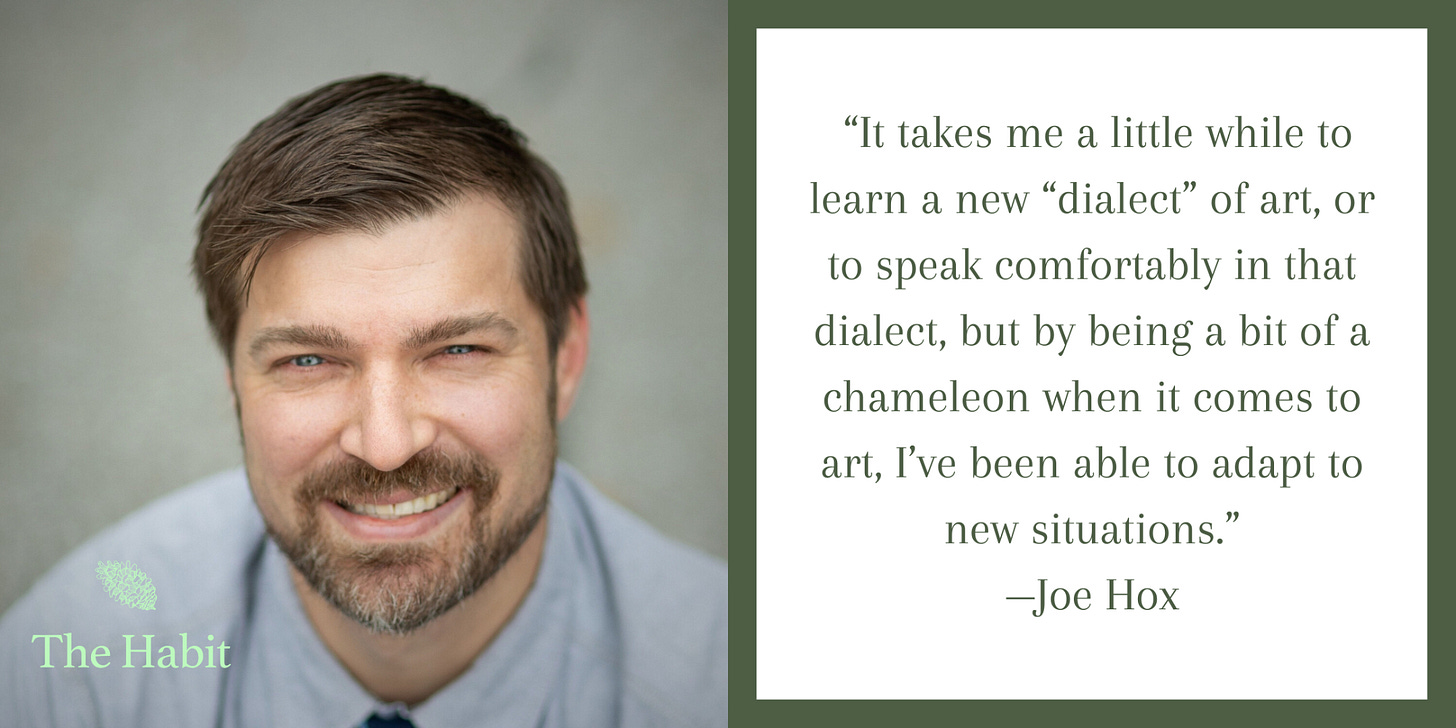In preparation for the upcoming Writing with Dorothy Sayers class, I have been rereading Sayers’s book The Mind of the Maker. The Mind of the Maker is a wide-ranging (and sometimes quite dense) theology of creativity. It works out many of the ramifications of the truth that we human beings are made in the image of a God who creates. Given what we know about the human creative process, what does that tell us anything about God? Given what the Bible tells us about God, what does that tell us about the human creative process? Actually, the book’s concerns are evern broader than that. Sayers asks, If we are indeed made in the image of the Creator—which is to say, creativity is at the heart of what it means to be human—how does that creativity shape the way we should be thinking about every aspect of our humanity?
Next week I intend to look into Sayers’s trinitarian vision of artistic work: “In art, the Trinity is expressed in the Creative Idea [corresponding to God the Father], the Creative Energy [corresponding to God the Son], and the Creative Power [corresponding to God the Father]—the first imagining of the work, then the making incarnate of the work, and third the meaning of the work.” I’m still chewing on that one.
Today, however, I want to look at some surprising things Sayers said about problem-solving and creativity. We are so accustomed to seeing phrases like “creative solutions” and “creative problem-solving” that we take it for granted that creativity and problem-solving go together like peanut butter and jelly. Business books galore provide strategies for creative problem-solving. I’m quite sure I have written about creative problem-solving more than once in this space. But Dorothy Sayers is dubious of the idea that the main purpose of creativity is to move us from problem to solution.
According to Sayers, the prevalence of the problem-solution formulation grows from “the desire of being persuaded that all human experience may be presented in terms of a problem having a predictable, final, complete and sole possible solution.” That approach has its uses, of course. The scientific method has brought tremendous good by defining the world in terms of discrete problems that are small enough (or, perhaps, sufficiently shrunk down) for the human mind to handle. Sayers's point, if I understand it, is that we shouldn’t mistake the (often beneficial) artificiality of human-sized problems and solutions for the realities of navigating a world that refuses to shrink itself down to something that we can understand and solve. Creativity, in Sayers’s terms, is a function of making something new out of the impossibly complicated materials that the world presents us with.
The language of problem-solving, Sayers suggests, is the language of closure. There was a problem, I solved it, and now the problem is in the past. The crossword puzzle, once solved, can’t come unsolved. But neither can it continue to be interesting.
If problem-solving is about closure, the work of the artist is to open things up, to create new realities. We do not “merely examine the data to disentangle something that was in them already,” writes Sayers: “we use them to construct something that was not there before.” She frames artistic creation not in terms of problem-solving, but in terms of procreation.
To add John to Mary in a procreative process does not produce a “solution” of John’s and Mary’s combined problem; it produces George or Susan, who (in addition to being a complicating factor in the life of his or her parents) possesses an independent personality with an entirely new set of problems.
A new thing with not only an independent personality, but an entirely new set of problems. Welcome to the creative process. If there are problems to be solved, they aren’t the kinds of problems that stay solved. So hanging in there, continuing to do the work, requires that we come to terms with the fact that no “solution” is final; rather, the “solution” is a new reality with new challenges. And yet doing the work is what gives us the tools (and the confidence) to keep doing the work. These truths about artistic work are equally applicable in everyday life and relationships. Life is not a problem to be solved, but a medium of creation.
That being the case, the real value of art is not in producing moral judgments or practical solutions, but in modeling a way of approaching the world. Different stories may have different morals, but the more important “lesson” of any well-wrought story, according to Sayers, is something like this: “You must learn to handle practical situations as I handle the material of my book: you must take them and use them to make a new thing.”
Sayers quotes A.D. Lindsay on the lives of saints and the lives of artists:
The difference between ordinary people and saints is not that saints fulfil the plain duties which ordinary men neglect. The things saints do have not usually occurred to ordinary people at all… “Gracious” conduct is somehow like the work of an artist. It needs imagination and spontaneity. It is not a choice between presented alternatives, but the creation of something new. The distinction between the artist and the man who is not an artists thus lies in the fact that the artist is living in the “way of grace,” so far as his vocation is concerned. He is not necessarily an artist in handling his personal life, but he has at least got thus far, that he is using his life to make something new. Because of this, the pains and sorrows of this troublesome world can never, for him, be wholly meaningless and useless… If, therefore, we are to deal with our “problems” in “a creative way,” we must deal with them along the artist’s lines: not expecting to “solve” them by a detective trick, but to “make something of them,” even when they are, strictly speaking, insoluble.
I will continue the letter tomorrow, picking up with that phrase “detective trick.” Sayers has quite a bit to say about the artificiality and oversimplification that is baked into detective stories, which rely on the kind of problem-and-solution formulation that she decries in The Mind of the Maker. This is surprising, since Sayers is one of the all-time great practitioners of the detective story. Tune in tomorrow to see if we can find creative solutions to this problem.
Starting September 10: Writing with Dorothy Sayers
Dorothy Sayers was one of the leading lights of the “Golden Age of Detective Fiction.” Few of her peers had such high literary ambitions. In Writing with Dorothy Sayers, we will learn from this master storyteller and put her techniques and methods into practice in our own writing.
Writing With Dorothy Sayers includes six short recorded lectures, six 60-minute live Zoom discussions, as well as a dedicated online forum for discussion and writing exercises.
Dates:
Tuesdays, September 10-October 15, 2024
Times:
1-2PM Central
Watch the weekly lectures (~30 minutes) at your own convenience
Cost: $97
Intended Audience:
Adults, college-age and up (there will not be a student cohort for this class)
Virtual Writing Rooms on Monday Tuesday, Thursday, and Friday
Tonight, 7pm Central: Dorothy and Jack Book Club (with a visit from author Gina Dalfonzo)
Wednesday Evening, 7pm Central: Habit Frontiers
There's a place for you in this vibrant community of writers. Find out more about The Habit Membership here.
Joe Hox and I talk swampy.
As of last week, all three books of my Wilderking Trilogy, 20th Anniversary Deluxe Hardback Edition, have been released into the wild. The Bark of the Bog Owl released in June. And now The Secret of the Swamp King and The Way of the Wilderking are available wherever you buy books. These new editions have gorgeous new covers by Stephen Crotts and exceedingly swampy new interior illustrations by Joe Hox. Joe Hox is my guest on this episode of The Habit Podcast.
Get the books here.
Get the audiobooks (read by me) here.







She had a different approach. Instead of starting with 'how do we improve our current situation?), she started with 'how was this designed to work?'
Excited for the Dorothy Sayers class!